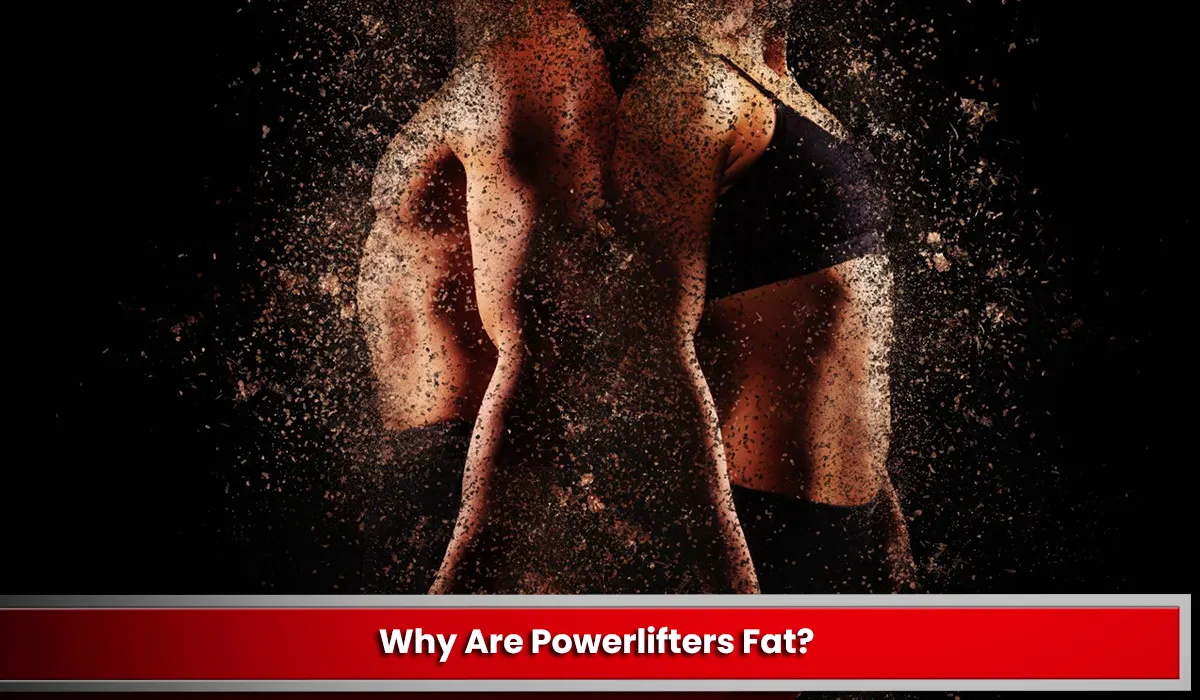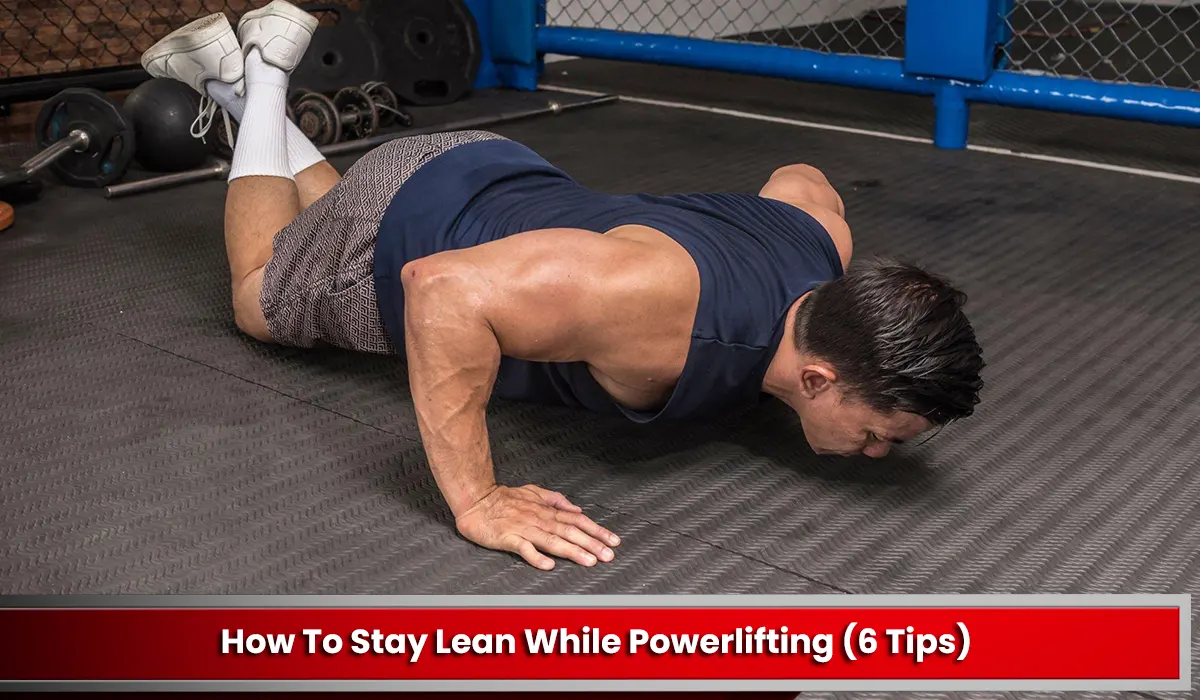When most people think of powerlifters, they see huge men and women built like sumo wrestlers. Is powerlifting responsible for this physique? Will Powerlifting Cause You to Gain Weight? No, powerlifting squat, bench, and deadlift training will not make you fat since the capacity to store adipose tissue (fat) is dependent on energy balance (calories in vs calories out). Energy balance involves both dietary intake and energy expenditure, rather than just your workout approach. In this post, I’ll examine if there are any advantages to being a fat powerlifter, what effective powerlifters’ body compositions look like, and 6 suggestions for being lean while powerlifting.
Does Powerlifting Make You Gain Weight?
No, powerlifting does not cause weight gain on its own. Although powerlifting combined with a caloric surplus increases the possibility of weight gain, this could be in the form of muscle mass or fat mass.
The total energy balance, which includes nutritional considerations, determines weight gain, not the workout stimulus alone. We are more likely to acquire weight (fat and muscle mass) if we eat a caloric surplus, whereas we are more likely to lose weight if we eat a caloric deficit (mostly fat, and potentially some muscle).
It’s worth noting that I could be a long-distance runner and still be obese if I ate more than my body needed. Obviously, this would be more difficult due to the higher energy expenditure of running over powerlifting, but weight gain is achievable regardless of the discipline.
Why Are Powerlifters Fat?

- To Gain the truth about anabolic steroids Muscle More Rapidly
Some powerlifters are overweight because they purposefully overeat in order to gain muscular mass, because “mass moves mass.” According to research, it is “easier” to increase muscle mass in a shorter period of time with an aggressive bulk; however, the disadvantage is that we would gain more body fat with this strategy. Because powerlifting is a weight class sport, aggressive bulking may boost our absolute strength (strength regardless of size) by adding muscle mass, but it may reduce our relative strength (how strong you are for your size) due to the extra fat mass.
- Lower Energy Consumption when Powerlifting
Powerlifters may also be overweight because the activity requires less caloric expenditure than other sports.
This is especially true for people who solely train competition lifts and do not incorporate accessory exercises (which I do not suggest), as well as those who do not lead an active lifestyle outside of training.
- Overeating Caused by Underestimation of Needs
Lifters frequently overeat by accident because they overestimate the number of calories burnt during a training session. When it comes time to “re-fuel” after training, our goal is to restore our energy stores while also encouraging muscle protein synthesis (the process of growing muscle in response to exercise) by eating a meal.
But what commonly happens is that we eat more food than our bodies truly require post-exercise because we believe we expended more energy in the workout than we actually did. Lifting burns an average of 75-100kcal for a lower volume session in women, around 150kcal for a lower volume session in men or a higher volume session in women, and around 300kcal for a larger volume session in men, according to research.
These figures are not set in stone because energy expenditure varies depending on the amount of overall work (sets x reps x weight) completed throughout the training session; nonetheless, it is most likely not 900kcal as a fitness tracker could suggest.
Is Being Fat Better For Powerlifting?
No, mass does move mass; however, this only refers to muscular mass, not fat mass. Because fat is not a contractile tissue, it does not assist in exerting the effort required to lift higher weights. We may feel stronger with higher body fat, but this is primarily due to increased calorie consumption. That being said, we may still eat at our maintenance calories (the number of calories you need to maintain your weight) and use nutrient timing to have more energy available for our workouts.
Instead of being obese, our goal should be to fill out our weight class with as much lean mass as possible, which may be accomplished by having more muscle mass and a lower body fat percentage. According to research, assuming athletes have identical skill levels, the strongest lifter in each weight class will be the person with the most lean mass.
Assume I participate in the 83kg men’s division and weigh exactly 83kg at 15% BF; I have nearly 71kg of Lean Mass. (this would also include the mass of bones, organs, not just muscle). My competitor weights 83kg, but with 20% body fat, he only has about 66kg of lean mass (assuming equal mass of bones and organs). Because my opponent has less contractile tissue to compete with, I have the muscle advantage.
How To Stay Lean While Powerlifting (6 Tips)

Increase Your Protein Intake
Protein is the most critical macronutrient for muscle development and maintenance. We limit our ability to grow muscle without enough protein, which impacts our size, strength, and metabolism. Because muscle uses more metabolic energy than fat, having higher muscle mass can help us maintain a leaner body composition. As a result, the more muscle we have, the more calories we burn over the day. Strength athletes should ingest 1.3-1.8 grams of protein per kilogram of body weight (body mass).
However, if we are in a caloric deficit, perhaps to lower a weight class, it is recommended to consume between 1.6-2.4 g protein/kg (body mass) to help keep muscle mass while shedding excess fat, with the upper end being more important the more extreme the deficit. If we have a higher body fat percentage (more than 25% for males or 32% for women), it is best to calculate our protein consumption using lean body mass rather than fat mass.
If we can’t get an exact measurement of our body fat to estimate our lean mass, we should utilize our height in centimeters rather than body mass or lean mass. For athletes looking to fill up their weight class, it is also worth noting that, while evidence is limited, a high protein diet when “bulking” may aid to minimize fat growth and stimulate higher increases in lean tissue.
Monitor Your Energy Balance
The quantity of calories we intake versus the amount of calories we burn is referred to as energy balance, which is also known as CICO (calories in, calories out). When we consume less than we burn (a caloric deficit), we have a negative balance, which leads to weight loss. When we consume more calories than we burn (a caloric surplus), we are consuming more energy than our bodies require.
This energy can be used by the body to build additional muscular tissue or stored as adipose (fat) tissue. Changes in muscle mass and/or fat mass can arise from changes in energy balance, depending on training stimulus and nutritional parameters (for example, volume/intensity, macronutrient ratios, and the amount of time spent in a deficit or surplus).
Focus On Nutrient Timing
When energy balance is considered, nutrient timing has the ability to improve body composition, training performance, and recuperation. Nutrient timing is the practice of adjusting your macronutrient consumption throughout the day so that our systems can better use specific macronutrients (carbohydrates, fat, protein) at specific times.
Carbohydrates
Carbohydrate management before and after workouts is essential for providing energy for our efforts and optimizing body composition. Consuming carbs before training guarantees that we have enough energy to perform well during our workouts. Following that, more carbs are required to refill the glycogen stores that have been depleted, promoting recovery and adaptability. Carbohydrate consumption should remain greater in the three hours following a training activity. This is especially significant when calories are limited or we are relatively slim, as we will have less energy available.
Fats
When carbohydrate consumption is at its peak, fat consumption should be at its lowest; this is because fat is not the primary fuel source for our bodies during strength training and is thus better used at other times of the day. Instead, fats should be prioritized while we are more inactive or conducting daily activities, because fat is the body’s preferred source of energy during these times.
Protein
Protein should be ingested at every meal and snack throughout the day to promote muscle growth and retention. The simplest technique is to calculate how much protein (in grams) we need for the day and divide it by the number of meals/snacks we intend to have – this is the quantity of protein (in grams) we should strive for at each feeding.
Cut Or Bulk Gradually
We must bulk gradually if we want to increase lean mass and fill up our weight class, or reduce gradually if we want to lose body fat and become more lean. If we rush a bulk, we are more likely to gain body fat than than muscle mass, making us less competitive in a powerlifting competition. We risk losing muscle mass (our valuable contractile tissue) as well as body fat if we trim too quickly, which reduces our force-generating potential. When we’re reducing or bulking to keep or increase as much muscle mass as can, the phrase “slow and steady wins the race” actually applies.
Get Your Steps Testosteronesuspension In
We’ve spoken about energy balancing methods in terms of nutritional interventions, so now let’s talk about how greater movement might help us stay lean while powerlifting. Getting 10,000 steps per day is a popular recommendation that came about after studies discovered that active individuals were averaging 6000 steps/day from daily activities (without exercise) and approximately 4000 steps from 30 minutes of exercise, so public health recommended 10,000 steps as a target for people to become more physically fit.
10,000 isn’t a magical number, but it’s easier to give them a target than to simply encourage them to “exercise more.” As a result, I believe it is worthwhile to use 10,000 steps (or whatever number of steps is tough but achievable for you) as a guideline – whether for higher caloric expenditure or simply better health. This is significant because most people believe that if they work out, they are being active enough to keep “healthy” and/or reduce weight. But does it truly balance out if we train for 2 hours a day and then sit for the other 22 hours?
Prioritize Sleep
According to research, sleep must be prioritized in order to grow and/or retain muscle mass. Inadequate sleep can impair muscle growth by restricting anabolic (building) hormone secretions while boosting catabolic (breaking down) hormone secretions, thus limiting our ability to increase and retain lean body mass.
Sleep deprivation can also increase fat mass by interfering with hormones that control our hunger signals, allowing us to consume more calories than we normally would. It can also reduce our everyday motions (NEAT) due to general weariness. The typical suggestion for individuals is 7 to 9 hours of sleep per night; however, athletes may require more sleep (9-10 hours) than the average person to recover adequately.
Final Thoughts
Powerlifters are sometimes stereotyped as obese and lazy strength athletes, but I hope that this perception changes over time. To be more competitive as powerlifters, we must prioritize nutrition, increase muscle mass, and exercise more throughout the day rather than only during training.

